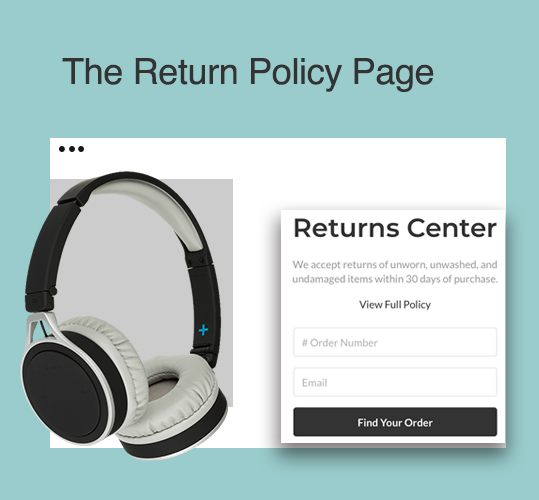Ecommerce sellers need to engage with their target audience to run a successful business. The online seller needs to create the best user experience to successfully sell online. Every ecommerce website/ store is unique. No matter how different your ecommerce business is, there are a few essential pages every ecommerce website must include. Wait, did you know that online shoppers’ look for certain pages while shopping online? When a customer visits your website, it is not mandatory that your to-be customers land exactly on the homepage of your ecommerce website. Online shoppers can reach any page of your website based on the search results shown to them upon the keywords entered. Several most important pages must not be ignored when creating an ecommerce website. In this blog, we will be throwing lights on some of the most important pages you must include when creating an ecommerce website.
What are the most important pages for an ecommerce website?
The Index Page
The Home Page or the Index Page is the welcome page or the storefront of your ecommerce website. This page is intended to provide your customers with all the information regarding your business and the links to the landing pages of the secondary level. The index page is arguably the most important web page of your ecommerce store. As an online seller, you need to be sure that it serves the purpose quite well. Its job is mainly to communicate with potential customers about what the business signifies and where the customers should move ahead on the website.
A well-designed index page must be inclusive of a UVP (Unique Value Proposition) that signifies the purpose of your business, the way it benefits or shall benefit the customers, and how the business is unique from the rest of them in the market. Ideally, all this information must be provided within 2-3 lines or even words, which we agree could be extremely hard. However, you need to make sure and define your UVP in order to get a clear idea of designing as well as organizing the remaining section of your ecommerce website as well as the marketing strategy of the business.
Another essential factor to be included in the index page is high definition images that define your brand as well as the products you sell online. Images play a major role in converting visitors to potential customers and then to long-term loyal customers. It helps them decide whether to purchase the product or not. For instance, if the product image of your best product is below par and shabby, that product is probably not bringing you sales as much as it can with a great product image. The images must be capable of communicating with your website visitors to your brand story. The images can be of any category; be it product images, banner images, office employee images, real-live product images, happy customer images, and the possibilities are endless.
The third factor in the home page category is the menu that includes the links to some important page categories on the ecommerce website. Everyone has visited at least one website with a menu option on the top of the page that lists down the most essential categories, a customer must know about the website. Generally, the menu tab in an ecommerce store consists of the key product categories, About Us page, Contact Us Page, Resources Page, and the list varies from websites to websites. In fact, the menu must not only be a part of the index page but also of every page on the ecommerce website.
Next, the index page should answer one of the most common questions asked by the customers – ‘Why should they trust your brand?’ Boasting of the services and the products offered would not suffice when it comes to earning trust from the shoppers in the ecommerce industry. Providing your shoppers with social proofs that let the shoppers know how other customers experienced after purchasing products from your ecommerce website. Social proofs can be provided in many forms, including testimonials, reviews, already existing customers, etc.
Lastly, an Index Page must be inclusive of a clear Call to Action (CTA). Once you have successfully lead the online visitors to your homepage, there is a great chance to lead those customers to the next level. And that can be done through CTA. Every business, as mentioned above is unique. You might need to check out different CTA’s and find the ones that suit your business. However, be sure that the CTAs are written is a clear simple language that stands out from all other content on the web page. Irrespective of the CTA used, your website visitors must get a clear view of the next step to be taken in the shopping cycle.
The About Us Page

The About Us web page is another way to strengthen your brand image and grow your ecommerce brand in your customers’ view. It gives a chance to the potential customers as well as the new customers to like the brand, and become your customers in the long run. Many ecommerce businesses think that skipping this page won’t make a great difference. However, let us break the bubble and let you know that your business is not achieving any success without the About Us page.
Online shoppers are always skeptical about purchasing goods and services online. Therefore, it is a common practice for the shoppers to check the about us page of the brand they may invest their money in. Although your index page has initiated the job of communicating with your potential customers, the About Us page provides the customers with in-depth information regarding your brand, business, and the products you are selling.
While there could be thousands of reasons behind the visitors checking out the About Us page, every reason can be narrowed down to a single purpose – getting more information! As an online seller, you must make sure that you provide only the most important and relevant information above the fold. Indeed, your potential customers have landed on your About Us page with a purpose, to get answers to some of their questions; and you, as a seller, must be sure of serving the purpose of the page.
The Contact Us Page
Now, this is again one of the most essential web pages to be included in an ecommerce website. Imagine your potential customers almost making up their mind to purchase the products you sell but have certain queries that are to be solved before making the purchase. If you do not take the call of helping them out, they are probably finding a better site that listens and answers their questions. Therefore, it is essential to include the Contact Us page in your ecommerce store with all the sufficient and convenient mode of contact information.
You need to provide every possible way to let the visitors get in touch with your brand easily. Also, do not employ complicated procedures or automated services that take hours to allow them to connect with your support team. You’ll simply frustrate and shoo away the customers who were willing to purchase from your store by not providing adequate contact information.
The Privacy Policy & Terms and Conditions Page
Every ecommerce business can set its privacy policy as well as terms and conditions by abiding by the demands and the market requirements. In order to give a seamless customer service, your website must mention the policies of your company in order to service the customers and the terms and conditions for the services provided. These pages are to be placed at the right places such as soon before completing an order. Also, you need to ensure that the customers go through these pages before proceeding with the order.
Generally, businesses provide a checkbox in the checkout page stating that the customers must agree to the terms and conditions and have read the privacy policy before placing the order. Creating a commendable privacy policy for your ecommerce store also plays an important role in grabbing trustworthiness for your brand. So, make sure that you are doing it right.
The Return Policy Page

When shopping online, customers look for services that are reliable and that their investment won’t be a waste due to faulty services and products. Due to this reason, online sellers offer return policies, within which, the customers can return the products purchased. Usually, the return policy is mentioned on the billing page of the product wherein the customers get to know whether the product is returnable and the conditions in which it can be returned.
This page is quite important, again to gain trustworthiness from the customers and assure them of a safe service. Your return policy must be clear and specific without hiding any essential information from the customer. The buying as well as the return process in an ecommerce store must be as painless as possible.
Final Thoughts
Adding these web pages can surely bring you some great value to your ecommerce store. However, creating an amazing store is another challenge in the highly-competitive market. Why not check out the Builderfly Easy Ecommerce Platform? We are sure, you’ll find everything you need to create a beautiful online selling store.







